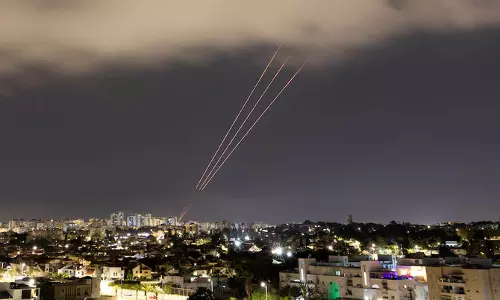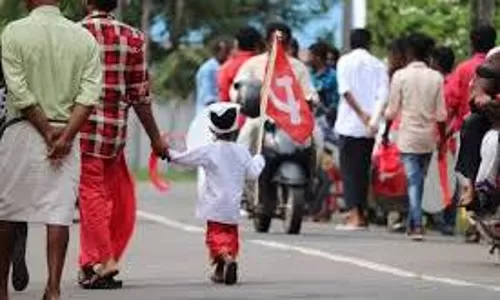
Behind the Babri Masjid settlement
text_fieldsWhen the Supreme Court is all set to hear the final arguments on 5 December in the Babri Masjid case , which has given the country much disquiet for the past three decades, the Shia Central Waqf Board of UP and the Akhil Bharatiya Akhada Parishad, which is party to the land dispute in Ayodhya, have said that they have reached a settlement regarding reconstruction of the mosque.
The reported settlement is not to construct a new mosque in Ayodhya or Faisabad, but to find another plot in a different Muslim-majority area and to inform the government about it. This was disclosed by the President of the Uttar Pradesh Shia Central Waqf Board, Waseem Rizvi. He had filed an affidavit to the same effect before the Supreme Court in August when the Babri Masjid case came up for hearing. The rationale of the Shia Waqf Board for their role is that Mir Baqawi who built the masjid in 1523 on the instructions of Mughal emperor Babri was a Shia, and that Babar himself was a Shia. But all through 450 years after its construction, Muslims regardless of Sunni or Shia, had been offering prayers till the night of 22 December 1949 when the Babri Masjid was closed following the placing of an idol of Sri Rama insde it, and the district collector ordering its closure. And never since the case came to the court and in the pendency of the unresolved dispute about its ownership has the Shia Waqf Board raised such claim. Furthermore, the masjid is recorded as the waqf property of the UP Sunni Central Board of Waqf, as per the UP Muslim Waqfs Act, 1936.
The property is recorded as a Sunni Waqf in the official gazette published on December 26, 1949 and in the report of the Babri Waqf Commissioner. Eminent Shia scholars Maulana Kalbe Jawad and Moulana Syed Mohammad Naqvi had announced their stance in 1945 that the ‘masjid belongs to Allah; not to the Shias and Sunnis’. Maulana Kalbe Sadiq, the vice president of All India Muslim Personal Board that has been intervening in the matter, is a popular Shia scholar. He has been of the firm stance that the Babri Masjid and its site belonged to the Muslims. The Shia-Sunni divide was never manifested in the matter. The claim that Babur, the founder of Mughal Empire and his successors were Shias, is totally new. Fatawa-e-Alamgiri which has been recognized in the existing Muslim Personal Law as the authentic source of Hanafi madhab, one of the four schools of thought within Sunni Islam, was compiled and codified by the then Hanafi scholars at the instance of Mughal Emperor Aurangzeb. If Aurangzeb had belonged to the Shia community then he would not have made such an effort.
With all these facts existing, the Shia Waqf Board coming forward claiming its right over the Babri Masjid site at the last moment and reaching a decision to hand over the land to the Akhara Parishad in accordance with the settlement made with them, is totally mysterious. The rumour that certain games have been played behind submitting such an agreement that is capable of influencing the apex court, is certainly pertinent. The High Court of Allahabad had on September 30 ruled that the disputed land in Ayodhya would be divided into three parts and that it will be shared by the Hindu plaintiffs and the Sunni Muslim Waqf Board. The Supreme Court is hearing the appeal filed by the three parties challenging the court judgement. The Muslim party concerned has already made it clear that even if the court verdict is in favour of the Ram temple supporters, they would comply with the order. But then, what if the court rules the Babri Masjid site as a property of the Waqf Board? Although all parties are liable to comply with the court order, the Sangh Parivar has not so far made that clear. Instead, they have been demanding construction of Ram temple by obtaining land through new legislation. The attempt was to seize the land under the pretext of an agreement without going for such a complicated situation. It is noteworthy that lately, Uttar Pradesh Chief Minister Yogi Adityanath has also called for an amicable solution on the issue. It should therefore be deemed that the move for a mutual agreement by bringing in the Shia Waqf Board that was nowhere in the picture until now, was to experiment with the imperial strategy of ‘Divide and Rule’. The origin of the Babri Masjid dispute itself was a fake made through a footnote by Annette Beveridge who produced the first English translation of Tuzk-e-Babri, a memoir of Emperor Babur. Any negotiation that can lead to an amicable settlement of issues are certainly relevant and significant. But it should be one that engages all the parties concerned and taking them into confidence. It should not be a 'hoax' by eliciting a section of the community of Minority Affairs Minister Mukhtar Abbas Naqvi.























